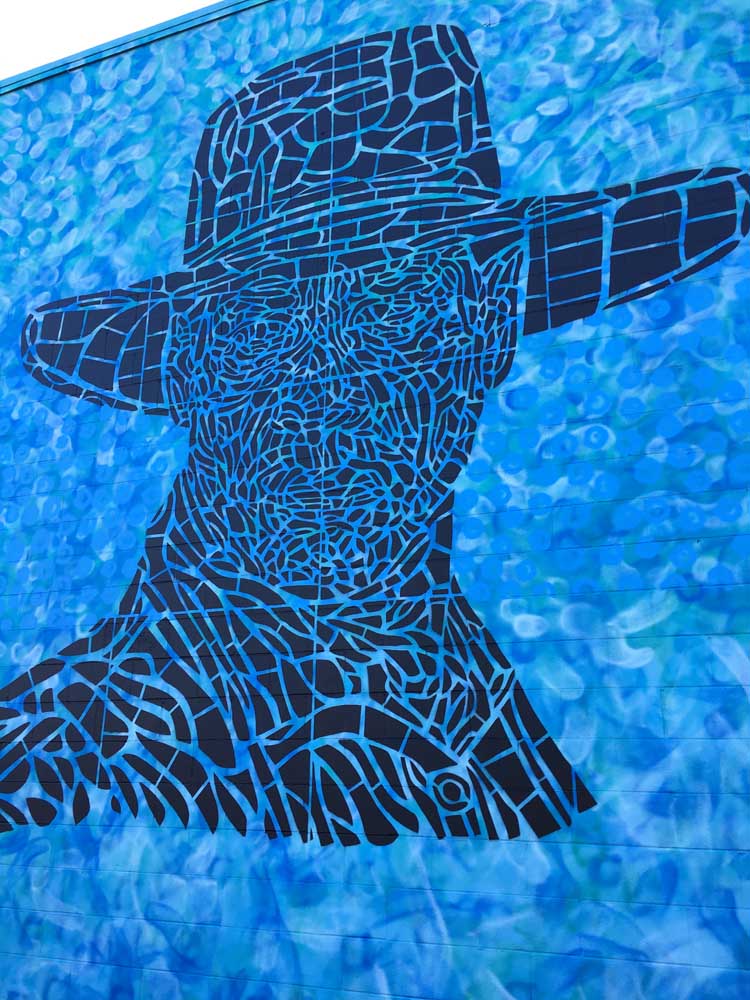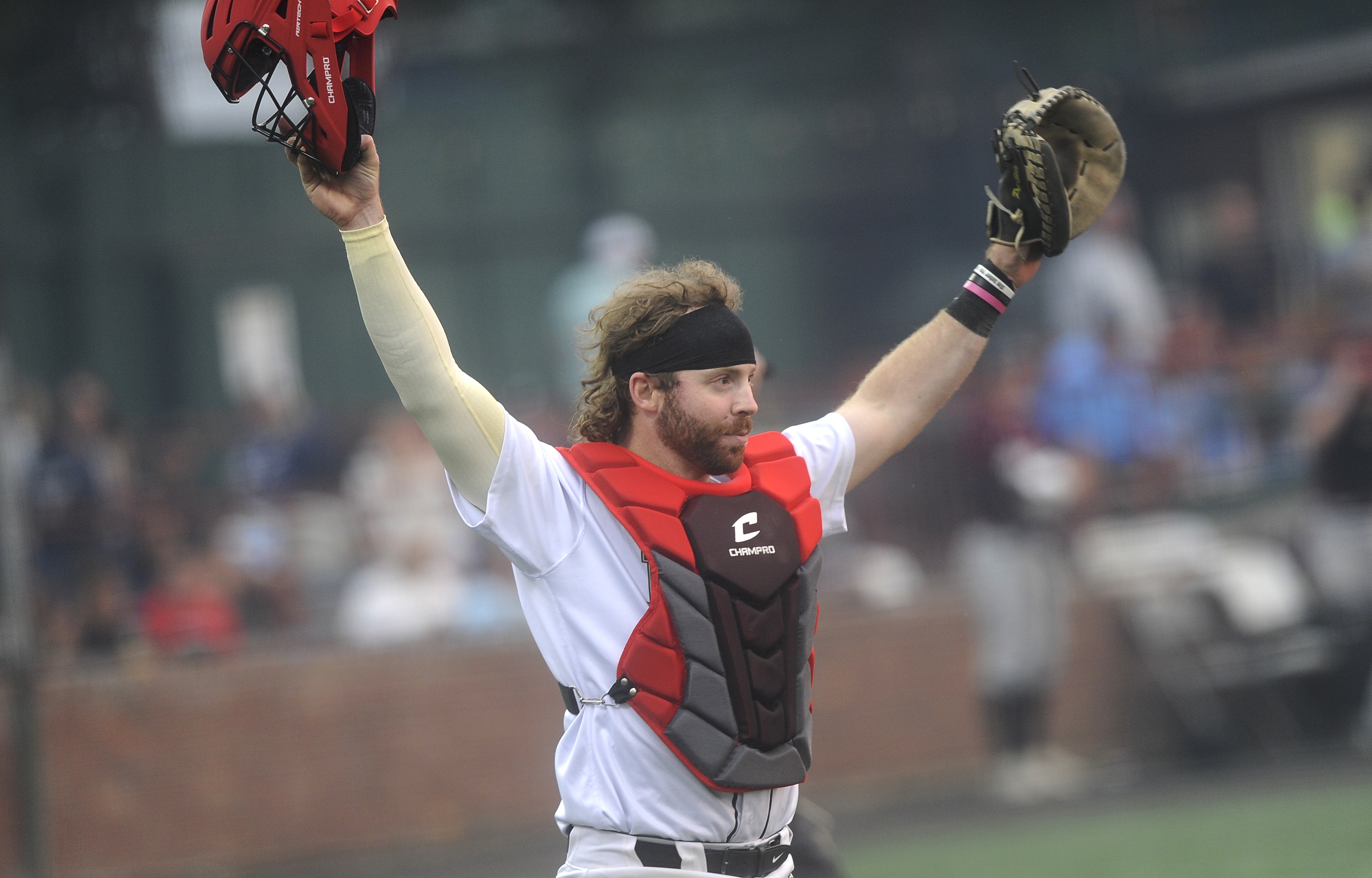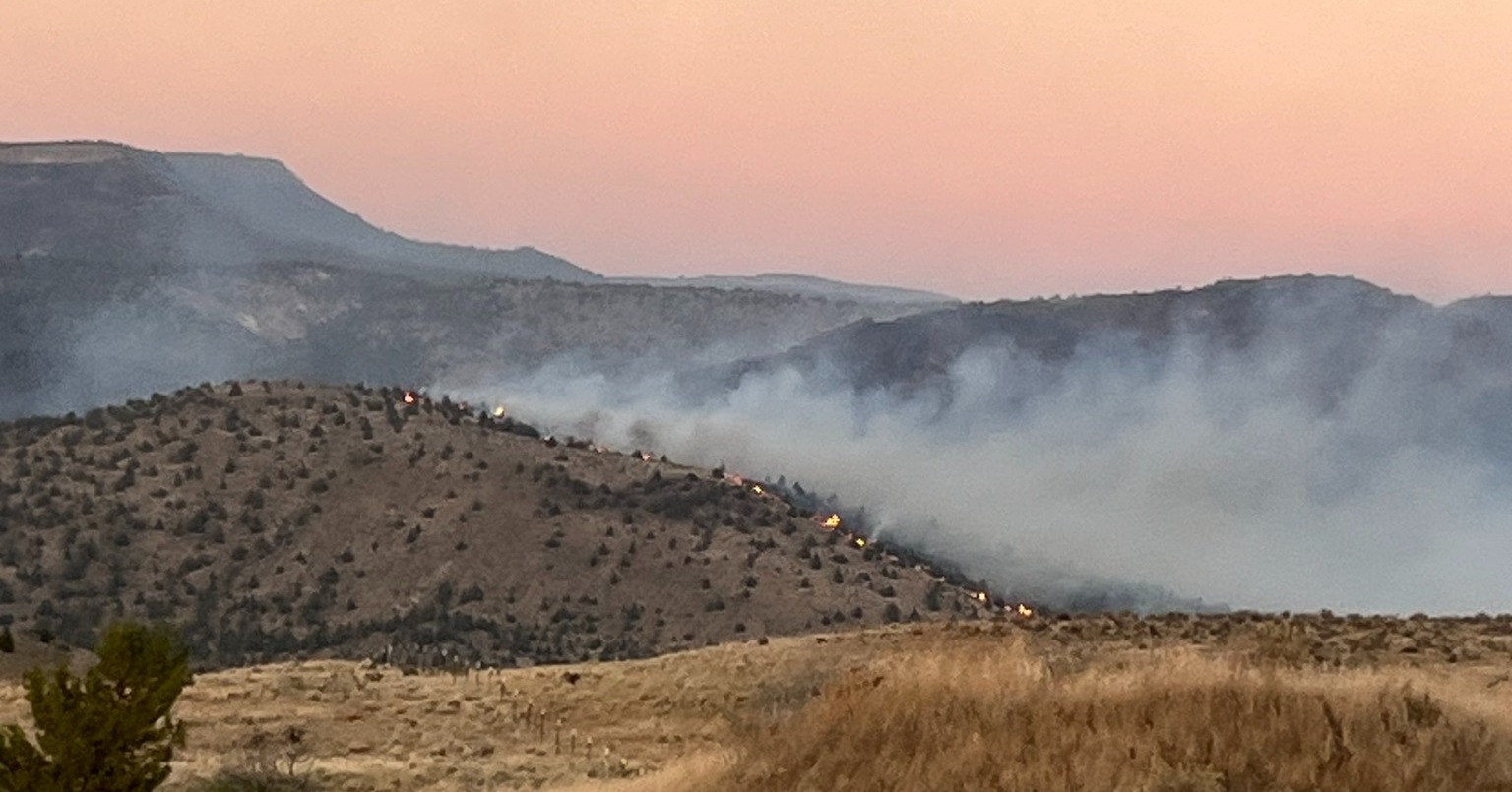Mural Festival expands public art efforts in Bend
Published 12:00 am Sunday, August 18, 2019

- Each cowboy portrait in the mural is 16-feet high. In total, the 21-by-96-foot mural is the largest artist Doug Robertson has ever painted. (Photos by David Jasper / The Bulletin)
Bend artist Doug Robertson is on a mural mission.
The mission is twofold: Robertson, 49, founded the nonprofit High Desert Mural Festival, or HDMF, in 2015 to promote art on buildings and walls by fostering arts education and generally raising the visibility of public art in Bend.
Trending
In addition to those ongoing efforts on behalf of spreading murals and helping other muralists, as a painter himself, Robertson is now hard at work on a large mural in the Bend Central District. Robertson has done close to a dozen murals in the past, including past works such as the 24-by-24-foot “Cowgirl on a Rearing Horse Between Abstract Flowers” on Greenwood Avenue in midtown. But at a whopping 21 feet high and 96 feet wide, “Cowboys in Ocean,” his in-progress mural of four 16-foot stenciled cowboy portraits, is his largest ever.
The fact of its bright blue-and-black existence attests to a sea change in how murals are viewed here, thanks in large part to the efforts of Robertson and the High Desert Mural Festival.
Evolving mission
“When we see a building that we think is great for a mural, we’ll approach the business first,” Robertson said. “If they’re the building owner then we’ll interact with them as well.”
The most difficult part of the mural-producing process is “getting building owners to want to do it.”
Still, the four-cowboy mural is, he estimated, the 20th to be done under the auspices of High Desert Mural Festival, and the fourth major one.
Trending
“When we started this process in 2015, it wasn’t even legal to paint murals in Bend,” Robertson said. “We had to reinvent the wheel and work with the City Council and city staff and the now-defunct Arts and Beautification Commission.”
Patterned after street art festivals such as Pow! Wow! in Honolulu and Nuart in Stavanger, Norway, the first iteration of High Desert Mural Festival took place over a week in early autumn 2016, pairing local muralists with walls at Cosmic Depot novelty shop and other Bend locations.
After the festival’s second year in 2017, HDMF began to shift its focus from a weeklong arts festival to facilitating the creation of as many murals as possible during dry weather.
“We decided to concentrate on achieving as many murals as possible during the good weather and not restrict ourselves and participating artists to a specific time frame,” Robertson explained in a follow-up email. “We would like to move toward a focused festival if/when we have grown enough as an organization to accommodate it.”
In December 2016, the city began allowing murals in the Makers District, that area along First and Second streets, bordered by Olney Avenue on its north end and Greenwood Avenue at the south.
“It took 18 months to get the pilot program off the ground, and that was the Makers District. That was the only place murals were allowed,” Robertson said.
Changing the rules
Last fall, the nonprofit was working with students at Elk Meadow and Pine Ridge elementary schools toward painting a mural on the Central Oregon Irrigation District canal retention wall along Brookswood Avenue in southwest Bend.
“We were intending on painting it with 210 fifth graders as a collaborative project … between the two schools. The glitch was that it’s outside of the mural zone and because you can see the tail end of it on a major thoroughfare, it fell under the guise of the city sign code, and so it was illegal,” Robertson said.
Setting the precedent of painting anyway was not an option — but getting kids involved in the political process was.
“We started leveraging fifth graders, basically, starting in November and December, to get the City Council to change the code and expand it to the whole city,” he said. “We basically pitched it as ‘You’re restricting their educational opportunities.’”
Further, HDMF argued, the pilot program in the Makers District had been a success, or at least had not become a liability, since its inception two years earlier.
“There was no evidence that it was problematic. The feedback we were getting from the community was that everybody wanted it,” he said.
In January, Ned Myers, assistant principal at Pine Ridge, asked the council to revisit the sign code and consider revising it to allow murals outside the Makers District.
This spring, after public hearings by the planning commission and City Council, the council voted to allow murals on nonresidential private property throughout Bend.
By July 5, the rule change made it possible to get a mural sign permit outside of the Makers District.
“There are quite a few (murals) that have gone up, and we expect there to be more,” said Kim Voos, associate planner for sign code in the city of Bend Community Development Department.
Though a permit is required, she said, “the permit would only be for the consent to paint a mural — it does not involve any determination based on content.”
Voos also explained that murals are allowed on nonresidential, privately owned buildings. A mural could be permitted in a residential zone if it’s on a developed site abutting an arterial or a collector — that is, a street connecting a neighborhood with an arterial road. However, the developed site could not be in residential use.
She offers a school as an example.
“A mural sign may be permitted on a public school building or structure located in a residential zone if it abuts an arterial or collector street and does not include a residential use,” she said. (“Mural sign” is a frequently used term in Bend. Explains Robertson, “I don’t think of murals as signs. They are art. Murals are just under sign code jurisdiction because the city can not view/regulate them differently than signs that advertise because that would be regulating the content, which they can’t do.”)
Though not that many murals went up in the Makers District during the pilot program, Voos said, it was the first time murals had been allowed in the city, and it takes time to spread the word.
“I think getting the word out, and then pairing artists with property owners of eligible sites, probably took some effort by people like Doug Roberts,” Voos said. “The amendments are the result of efforts made by people like Doug to provide that work of art for the community, by pairing artists with those property owners. I think that initial step really took some time. So we didn’t see too many come in initially, but I do expect that to change.”
As part of its mission, High Desert Mural Festival, through grants and donations, pays all production costs associated with a mural, including permit fee, equipment rental and paint. For the Cascade Heating & Specialties project, Denfeld Miller donated the blue background paint, and Earth and Sky Construction’s paint crew voluntarily applied it.
As it happens, the mural Robertson has spent the past two weeks painting is located at the intersection of First Street and Olney Avenue, on the north end of former mural boundary in the Makers District, which is nestled inside the larger Bend Central District.
Graffiti deterrent
High Desert Mural Festival will approach building owners about the possibility of installing a mural, and that’s how its current project came to be at Cascade Heating. Lisa Johnson is the daughter and assistant of Al Damon, founder of Cascade Heating. She said they were receptive when Robertson approached about the possibility of a mural on the large wall of the building, located at 1507 NE First St.
“The west-facing wall is a rather large wall that now faces the parkway,” Johnson said. “We’ve gone back and forth for years of what to do with the graffiti from being on the (railroad) tracks,” which run between the building and the Bend Parkway.
In the past, Johnson said, the wall’s location made it a magnet for graffiti. According to Robertson, studies show that murals tend to disrupt the activities of graffiti artists and taggers.
“He showed us all these pretty cool articles about walls that start to become less graffitied by having art displayed,” Johnson said. “So hopefully that proves true.”
Murals that come about with HDMF’s involvement are not commissioned works. As the FAQs page of High Desert Mural Festival’s website explains, “Ultimately the artist has control because the artist is not being commissioned to do a mural.”
Commissioned pieces are expensive, whereas with HDMF’s mural process, “We’re basically inviting the artists to sort of share their work with the community. It’s not a money-making venture for the artists.”
Building owners can view prospective artists’ digital portfolios, which “gives a building owner an idea of what the final product’s going to be based on their previous work,” Robertson said. “And sometimes those artists have done murals.”
Because of certain grants HDMF relies on, “The owners have to sign off on it, and (because) it’s going to be on their property, they have to agree there’s no advertising involved in it of any kind. And the subject matter can’t have anything to do with their business,” Robertson said. “It would violate how our nonprofit is set up and some of our grants if we started becoming an advertising company.”
To match an artist and a building owner, the building owners receive a basic idea or a digital sketch. Creative license remains in the hands of the artist,
“It’s a collaborative process where we (HDMF) help facilitate the process with the building owner and the artists,” said Robertson, who was involved in that capacity before landing the mural himself.
“I wasn’t actually intentionally trying to get the mural,” Robertson said. “I didn’t throw my hat in the ring until later in the process, until they were kind of hemming and hawing about stuff and not feeling that excited. And potentially, we were going to delay it for, like, a year.”
Enter Robertson’s “Cowboys in Ocean” stencil pitch.
“My dad … is an old-timer from Bend. He was born and raised here, and we liked (the) little bit more country, local approach,” Johnson said.
That Western motif, being unrelated to the type of work Cascade Heating does or its advertising, also fit the bill for HDMF.
Some of the initial pitches they saw came from artists living outside the area, Johnson said. They were partial to using a local artist.
“We were able to view the other mural over off Greenwood, and Doug seems to be a great guy, also,” Johnson said Tuesday. “He brought in some options of his different stencil work, and my dad really gravitated toward the cowboys. We’re halfway into it (and) we’re feeling excited about it.”
Johnson would “definitely” urge other building owners to consider a mural.
“Being around Bend and watching the arts grow is, I think, positive for the young and the old alike.”
— Reporter: 541-383-0349, djasper@bendbulletin.com








